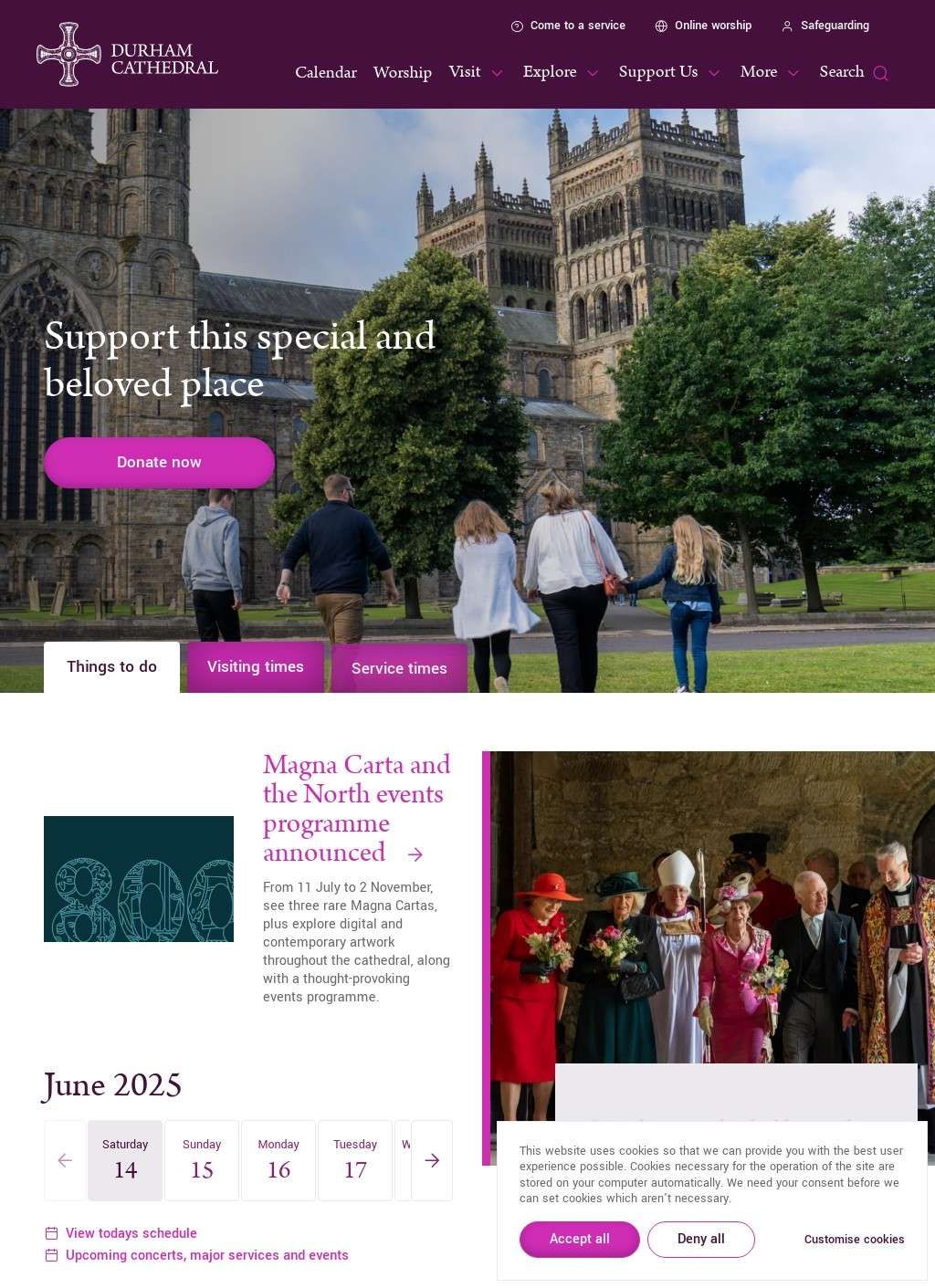Durham Cathedral stands as one of Europe's finest examples of Norman architecture, commanding the Durham skyline from its elevated position on a rocky promontory above the River Wear. The cathedral serves as the mother church of the Diocese of Durham and continues its thousand-year tradition as a place of worship, pilgrimage, and community engagement. Built between 1093 and 1133, this architectural masterpiece pioneered the use of ribbed vaulting, which would later become a defining feature of Gothic architecture, showcasing the innovative audacity of medieval builders who pushed the boundaries of what was technically possible with stone construction.
As a functioning religious institution, the cathedral offers daily Anglican services alongside an extensive programme of events, exhibitions, and educational activities. The Durham Cathedral Institute, launched in 2022, hosts public discussions and debates on contemporary political, economic, social, ethical and spiritual issues, bringing together thought leaders and the local community. The cathedral's museum displays the treasures of St Cuthbert in spaces that were once part of Durham's medieval Benedictine monastery, whilst the famous cloisters and chapter house provide visitors with an authentic glimpse into monastic life. The Open Treasure experience allows visitors to explore the cathedral's collections, including medieval manuscripts, ancient textiles, and religious artefacts that tell the story of Christianity in the North East.
The cathedral's significance extends beyond its religious function, serving as a cultural beacon for the region. It regularly hosts major art installations, including participation in Durham's internationally renowned Lumiere light festival, where the North Front becomes a canvas for stunning projections telling the story of Lindisfarne and the cathedral's foundation. The building has also gained contemporary fame as a filming location for major productions, including the Harry Potter series, where its cloisters stood in for Hogwarts. Musical excellence remains central to the cathedral's mission, with the cathedral choir offering choral scholarships to both male and female students, breaking with centuries of tradition when it admitted female choristers for the first time in 2009.
Behind its spiritual and cultural offerings, Durham Cathedral operates as a sophisticated heritage organisation managing one of Britain's most important historic buildings. The cathedral asks visitors for a £5 donation rather than charging admission, making it accessible whilst funding essential conservation work. The building requires constant maintenance and restoration, with recent projects including work on the central tower's bells and ongoing efforts to preserve the medieval stonework. The cathedral's commitment to accessibility extends to its physical infrastructure, with improvements made to ensure wheelchair access and facilities for visitors with various needs, demonstrating how ancient buildings can adapt to serve modern communities.
The cathedral's role in education proves particularly significant, working closely with Durham University as part of the shared World Heritage Site. It houses one of the country's most important ecclesiastical libraries, with manuscripts dating back to the 6th century currently being digitised in partnership with the university. The Chorister School continues the centuries-old tradition of educating young singers, whilst broader educational programmes engage thousands of school children annually, teaching them about history, architecture, art, and religious studies through hands-on experiences within this living monument.
Economic impact studies reveal the cathedral's substantial contribution to Durham's economy, attracting over 700,000 visitors annually who support local businesses, hotels, and restaurants. The cathedral employs numerous staff and volunteers, from stonemasons preserving ancient crafts to modern marketing professionals promoting the site globally. Its conference facilities in the medieval Prior's Hall and Undercroft Restaurant provide unique venues for events, generating income that supports the cathedral's charitable mission whilst offering visitors memorable experiences in historic surroundings.
Looking forward, Durham Cathedral faces the ongoing challenge of balancing preservation with evolution, maintaining its role as a sacred space whilst adapting to serve an increasingly secular society. Plans include expanding digital engagement, developing new interpretive experiences, and strengthening community partnerships. The Magna Carta and the North exhibition, running from July to November 2025, exemplifies this approach, displaying the only surviving 1216 Magna Carta alongside later versions, connecting the cathedral's medieval heritage with contemporary discussions about law, liberty, and governance. Through such initiatives, Durham Cathedral continues to demonstrate that historic buildings needn't be museums but can remain vibrant, relevant institutions contributing meaningfully to 21st-century life.
